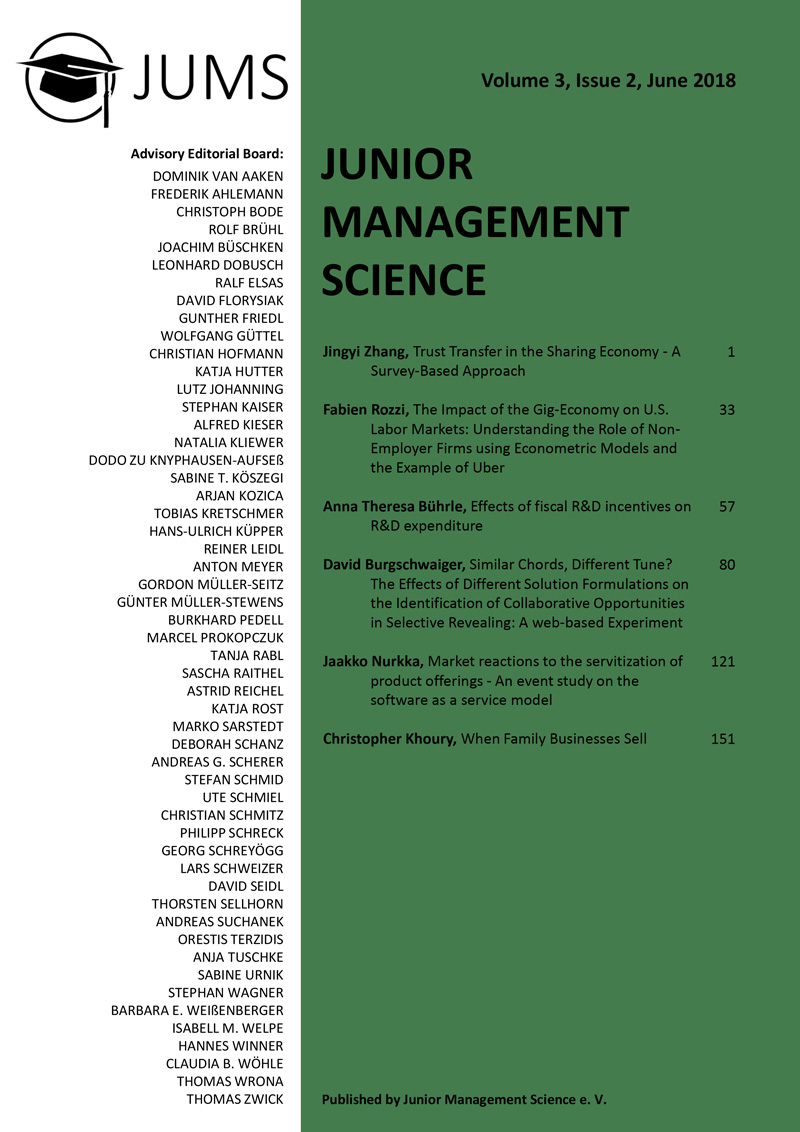Abstract
In this work, I provide quantitative responses to the questions of how the size and the growth of the gig-economy can be measured and how labor markets respond to the exposure to online platforms using data on non-employer firms from the U.S. Census Bureau and on the staggered market entry of Uber in different U.S. metropolitan areas. I find that non-employer firms experienced a growth by 60 % between 1999 and 2014 adding almost 9 million non-employer firms to the U.S. economy. I show that non-employer firms are tightly linked to the rise of independent work and are highly effected by the emergence of online platforms. Uber triggers an increase of 20 percentage points in non-employer firms relative to employment in the transportation sector 4 years after entering local labor markets. Furthermore, Uber’s market entry is associated with a 0.05 - 0.07 increase in non-employer share in the transportation sector. I demonstrate that the growth of non-employer firms between 2005 and 2014 is correlated with the growth in alternative work arrangements measured at the industry and state level by Katz and Krueger. I find that the rise of non-employer firms is not mechanically driven by differential industry or regional growth and that the number of gig-economy workers are at highest where unemployment is at highest. My results highlight the impact of the gig-economy on labor markets and provide evidence that the use of non-employer firms is relevant for measuring the gig-economy. In this work, I provide quantitative responses to the questions of how the size and the growth of the gig-economy can be measured and how labor markets respond to the exposure to online platforms using data on non-employer firms from the U.S. Census Bureau and on the staggered market entry of Uber in different U.S. metropolitan areas. I find that non-employer firms experienced a growth by 60 % between 1999 and 2014 adding almost 9 million non-employer firms to the U.S. economy. I show that non-employer firms are tightly linked to the rise of independent work and are highly effected by the emergence of online platforms. Uber triggers an increase of 20 percentage points in non-employer firms relative to employment in the transportation sector 4 years after entering local labor markets. Furthermore, Uber’s market entry is associated with a 0.05 - 0.07 increase in non-employer share in the transportation sector. I demonstrate that the growth of non-employer firms between 2005 and 2014 is correlated with the growth in alternative work arrangements measured at the industry and state level by Katz and Krueger. I find that the rise of non-employer firms is not mechanically driven by differential industry or regional growth and that the number of gig-economy workers are at highest where unemployment is at highest. My results highlight the impact of the gig-economy on labor markets and provide evidence that the use of non-employer firms is relevant for measuring the gig-economy.
Keywords: Gig-Economy, Online Platform Economy, Labor Market, Non-Employer Firms, Uber

